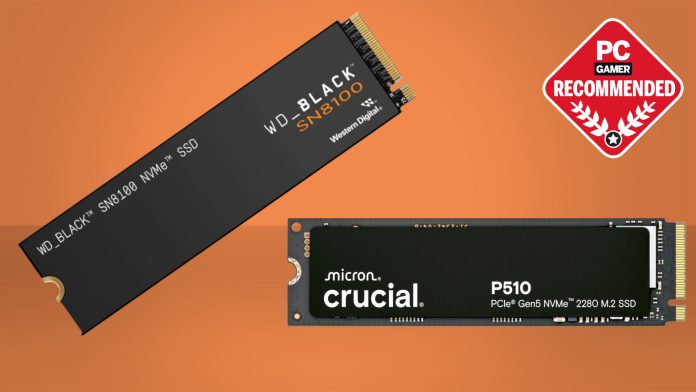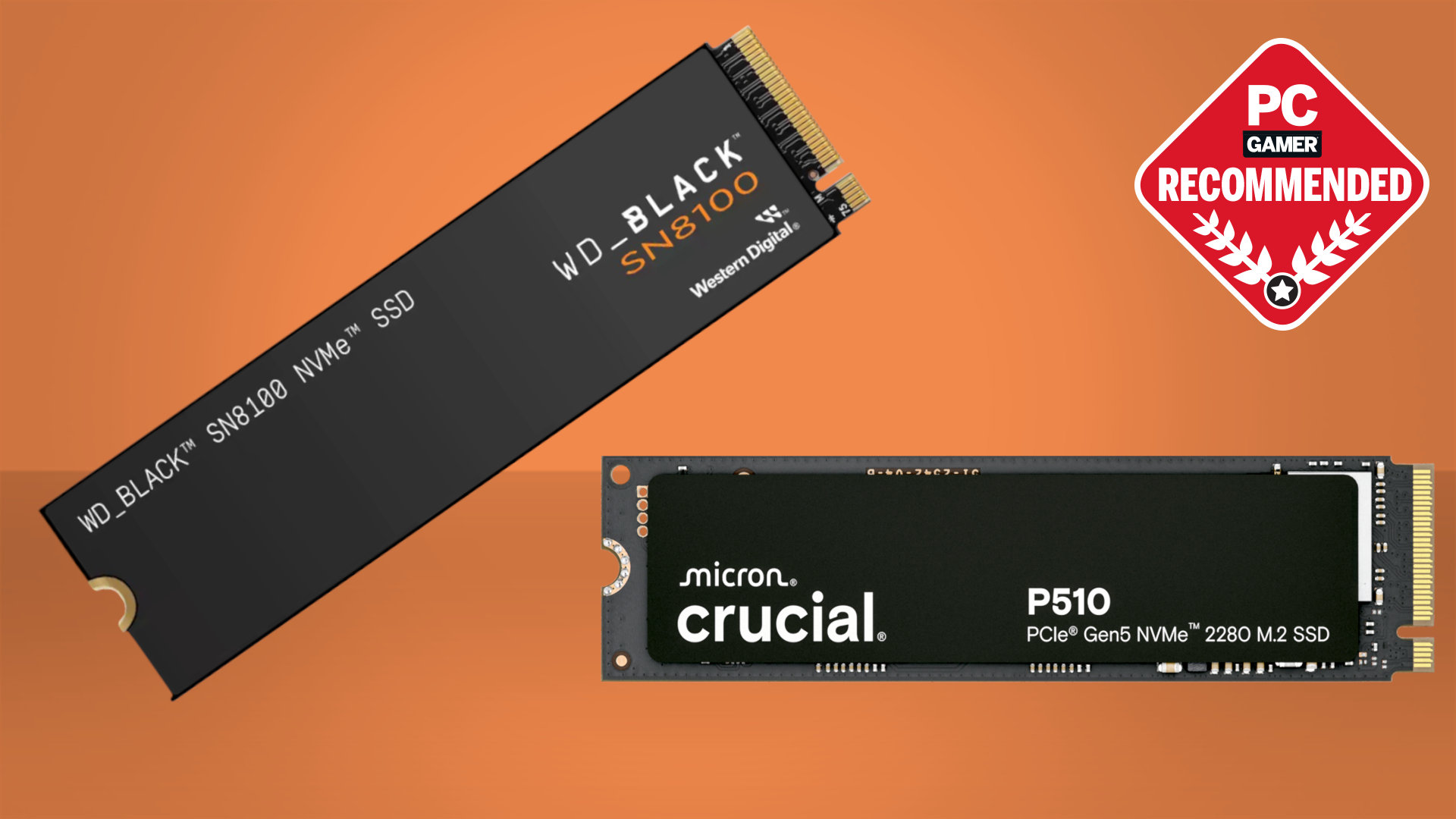
Ultra-fast PCIe 5.0 SSDs have been around for a while, but they’ve not been popular with PC gamers because of their high price, limited benefit in games, and hot running temperatures. The best PCIe 5.0 drives, though, are from a new generation of SSDs and have been significantly improved and finally offer enough to the gamer who must have the very best performance for us to recommend them.
The best PCIe 5.0 SSD for gaming you can buy right now is SanDisk’s WD Black SN8100. It’s outrageously fast, and thanks to its controller chip and DRAM, it can easily sustain those speeds. If you’re looking for something more affordable, then the Crucial P510 is our top recommendation for the best budget PCIe 5.0 SSD. You sacrifice a little bit of performance but gain a lot in your wallet.
Unless you don’t mind paying well over the odds for one, you’re still going to be looking at a PCIe 5.0 SSD with 1 or 2 TB of capacity. Smaller versions don’t really exist, but they’re not worth considering anyway, given how big games are today.
The quick list
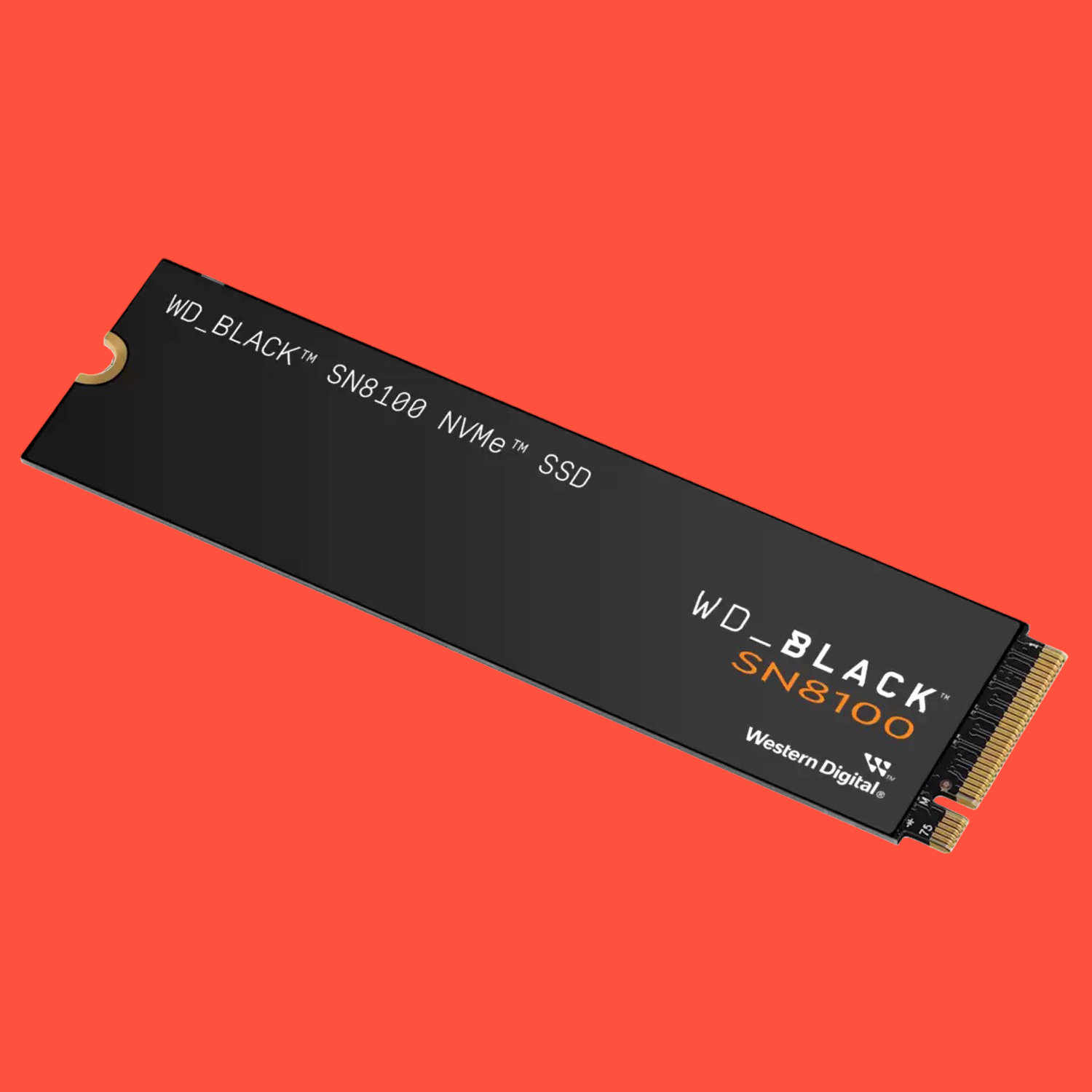
Best overall PCIe 5.0 SSD
The WD Black SN8100 is everything you could want from a PCIe 5.0 SSD. Its peak speed is blistering, and so is its sustained performance, and it runs pretty cool. Only the high price tag for the 4 TB model dulls its glory.
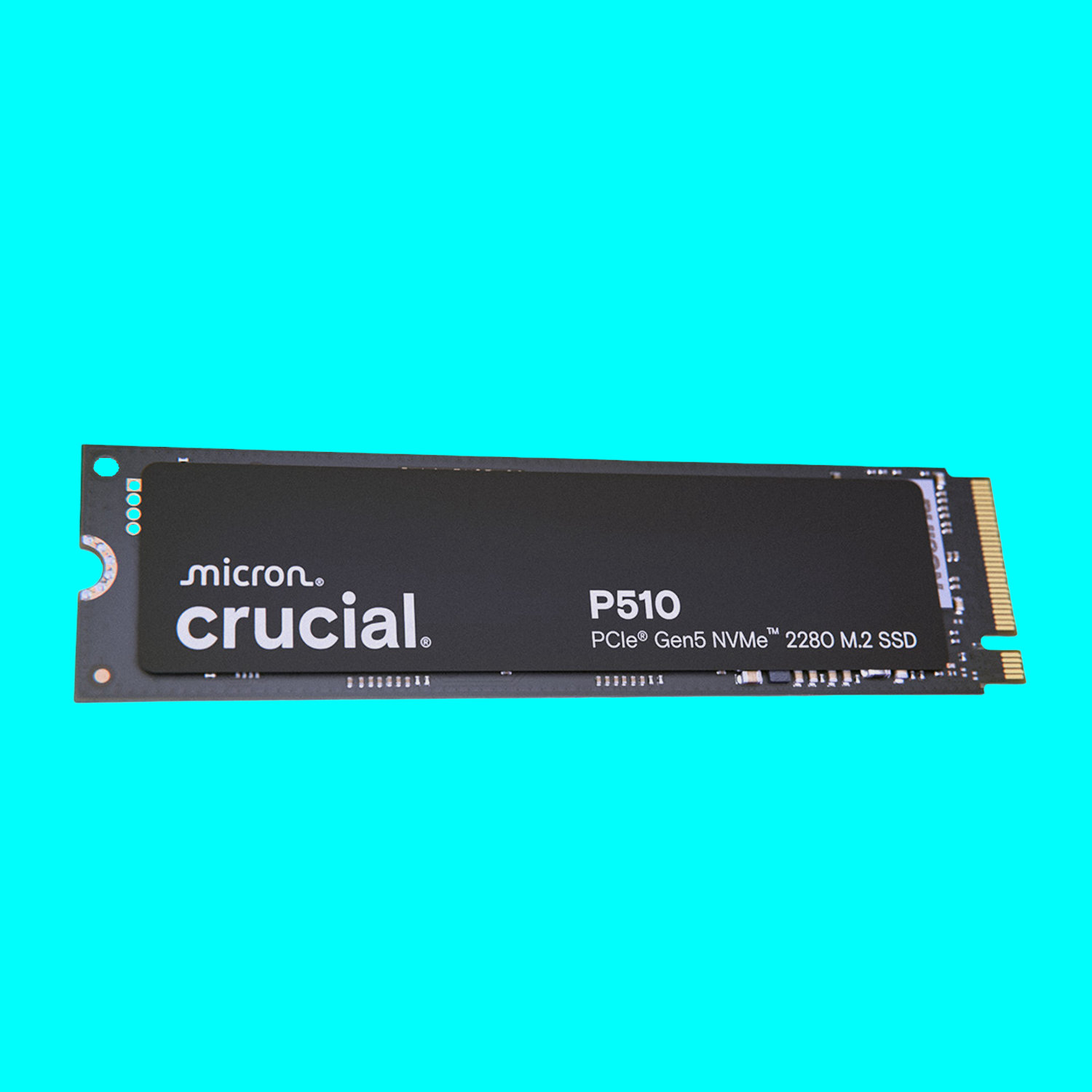
Best budget PCIe 5.0 SSD
PCIe 5.0 SSDs are normally a lot more expensive than PCIe 4.0 models, but not the Crucial P510. You do sacrifice a bit of performance to have a more wallet-friendly price tag, but it’s plenty fast enough for gaming.
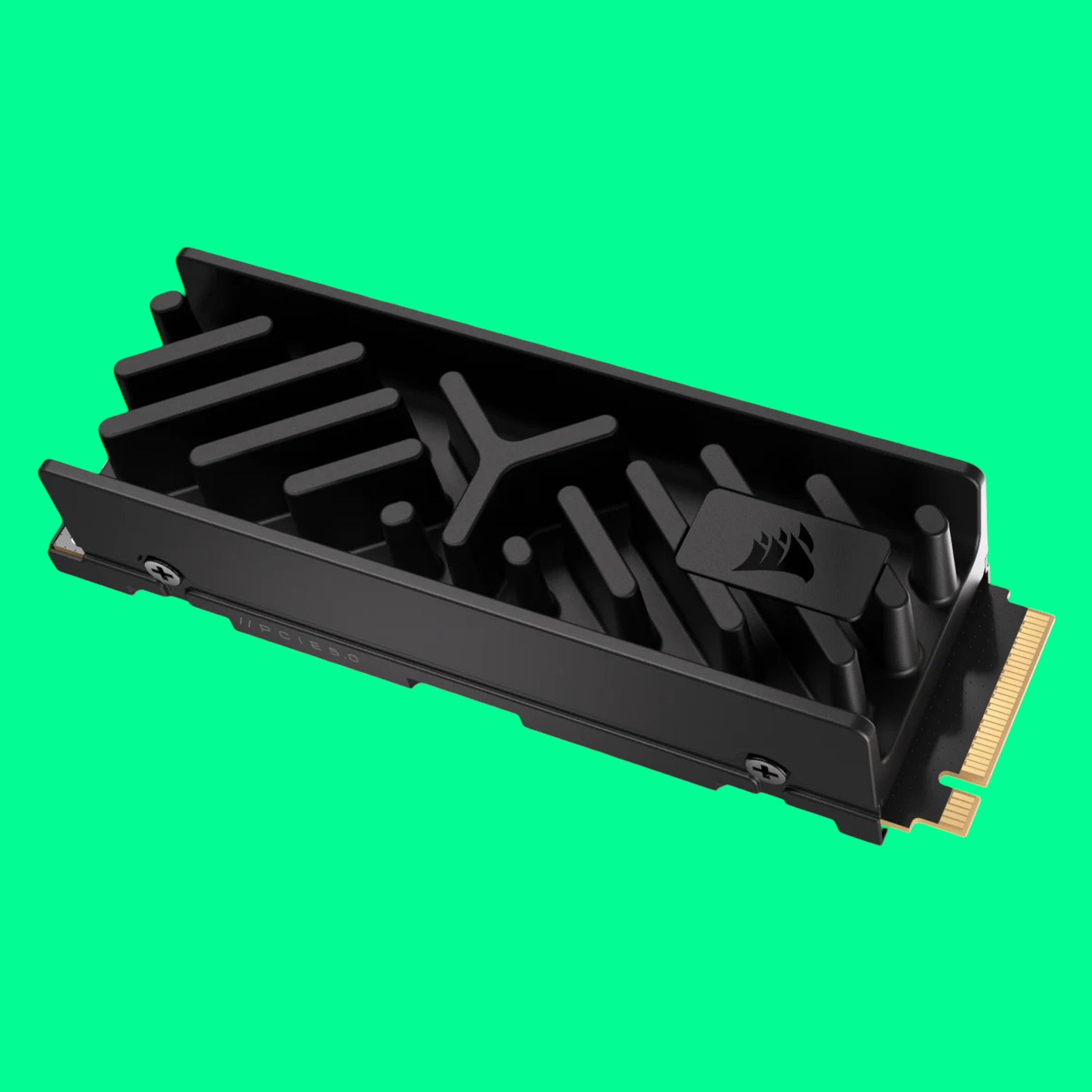
Best cooled PCIe 5.0 SSD
Most Gen 5 SSDs run quite a bit hotter than Gen 4 models. Apart from the Corsair MP700 Elite, that is. Thanks to its hefty heatsink and clever chip design, it’ll be cooler than anything else in your gaming PC.
Curated by

Nick has so many NVMe SSDs in his work and gaming PCs, that he’s genuinely lost track of them all. His squirrel-like tendency to load up on super-fast storage does mean he knows instantly which ones are great and which are best buried in the ground.
July 14, 2025: Now that we’ve reached the point where we’re happy to recommend PCI 5.0 SSDs for gaming, we’ve curated this guide to make it easy for you to pick the right one. Our top choice is the WD Black SN8100 for being brilliant in every aspect, with the Crucial P510 being a great pick for budget-conscious shoppers, and the Corsair MP700 Elite for those who hate heat.
The best PCIe 5 gaming SSD
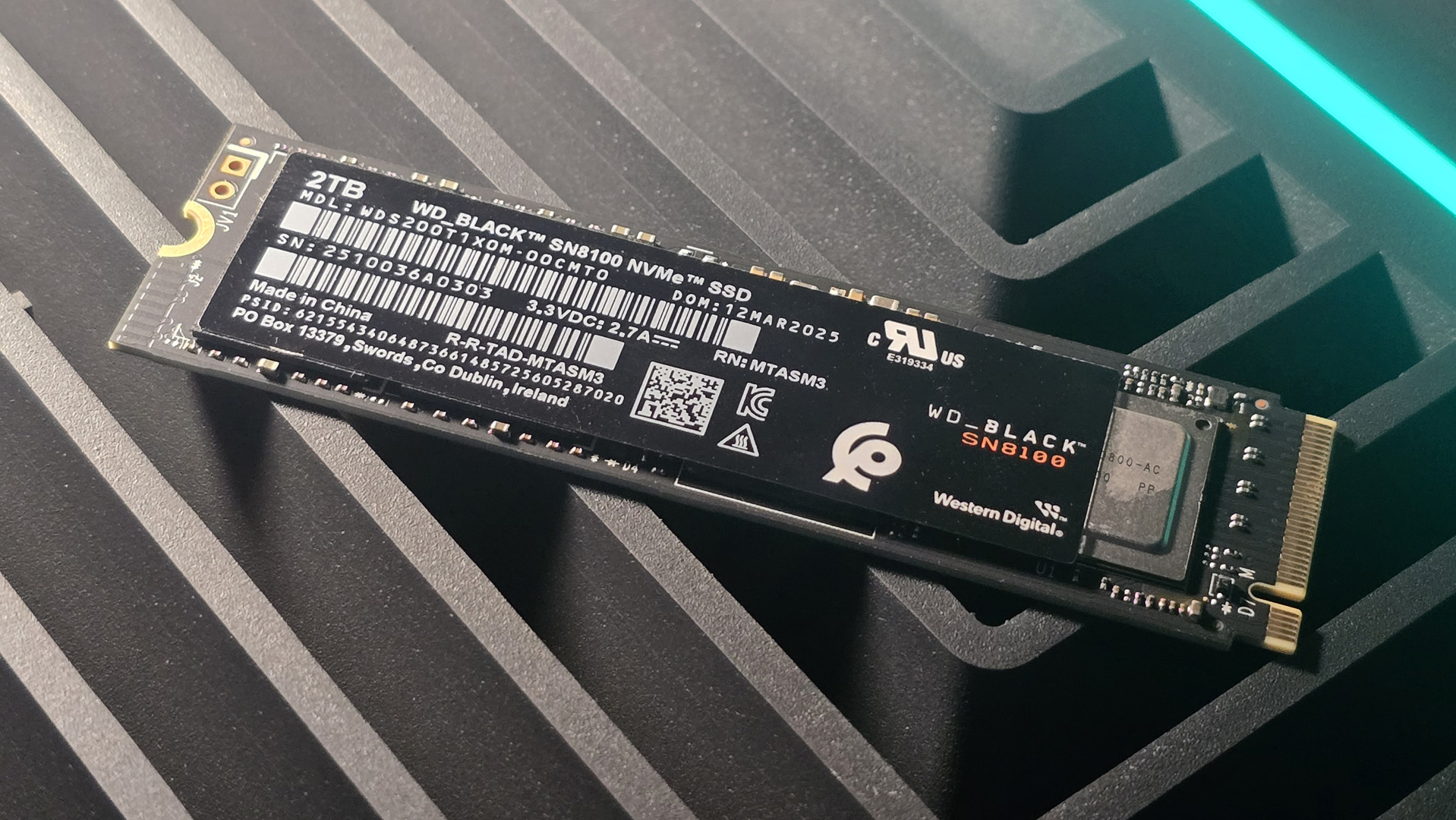
The best PCIe 5.0 gaming SSD
Specifications
Capacity: 1 TB, 2 TB, 4 TB
Controller: Sandisk SMI2508
Memory: Sandisk 218-Layer BiCS8 TLC 3D CBA NAND
DRAM: DDR4, 1 GB (1 TB) / 2 GB (2 TB) / 4 GB (4 TB)
Interface: M.2 PCIe 5.0 x4
Seq. read: 14000 MB/s
Seq. write: 14000 MB/s
Reasons to buy
+
Outstanding synthetic performance
+
Stupidly quick load times
+
Competitive pricing
Reasons to avoid
–
4 TB model is very pricey
Buy if…
✅ You want the best of the best: With outstanding performance across the board and competitive pricing, the SN8100 is one of the best SSDs money can buy, in-game or out.
Don’t buy if…
❌ You need 4 TB: It’s taken a little while for SanDisk to release a 4 TB variant of the SN8100, but the high price will put off a lot of people.
The bottom line
💾 The WD_Black SN8100 is the best PCIe 5.0 drive and the fastest consumer SSD you can fit into your gaming PC. And with the random 4k read/write performance it delivers, it’s head and shoulders abover every other Gen 5 drive we’ve tested.
The best PCIe 5.0 SSD for gaming is the WD Black SN8100, and it stands so far ahead of the competition that it will take something very special to topple it. The SN8100 has the perfect blend of blistering speed, consistent performance, and excellent thermals; even the price tag is competitive for the lower capacity models.
SanDisk has employed its own flash controller in the SN8100, but it’s been pretty tight-lipped about the specifications. What we do know is that it has eight channels and is designed to use DDR4 RAM to boost sustained performance. The company has also gone with its own memory chips, rather than using another supplier, though the 218-layer TLC flash chips are more than up to the job.
In terms of compatibility, the SN8100 is single-sided (i.e. all the chips are on the same side of the PCB), which means it will fit into any M.2 2280 slot on a motherboard. That also helps with keeping the drive cool, and for a PCIe 5.0 SSD, it’s pretty decent in that respect, though inevitably not as cool as a Gen 4 drive.
Our temperature tests are ruthlessly hard on SSDs, and most gaming scenarios won’t push them anywhere near as much, but what the latter will ask a lot of is random 4K read/write performance. Fortunately, the WD Black SN8100 is very good in this respect—so much so, that it leaves every other Gen 5 SSD we’ve tested in the dust.
The only downside to the SN8100 is the price tag of the 4 TB model. While PCIe 5.0 SSDs are more expensive than PCIe 4.0 ones, the lower capacity variants of this WD Black drive are competitively priced compared to similar SSDs. However, the 4 TB variant is well over $400.
If you do want the fastest possible SSD in your gaming PC, to shave off as much time as possible in loading and saving, then the WD Black SN8100 should be at the top of your shopping list.
Read our full WD Black SN8100 2 TB review.
⬇️ Click to load the benchmark data⬇️
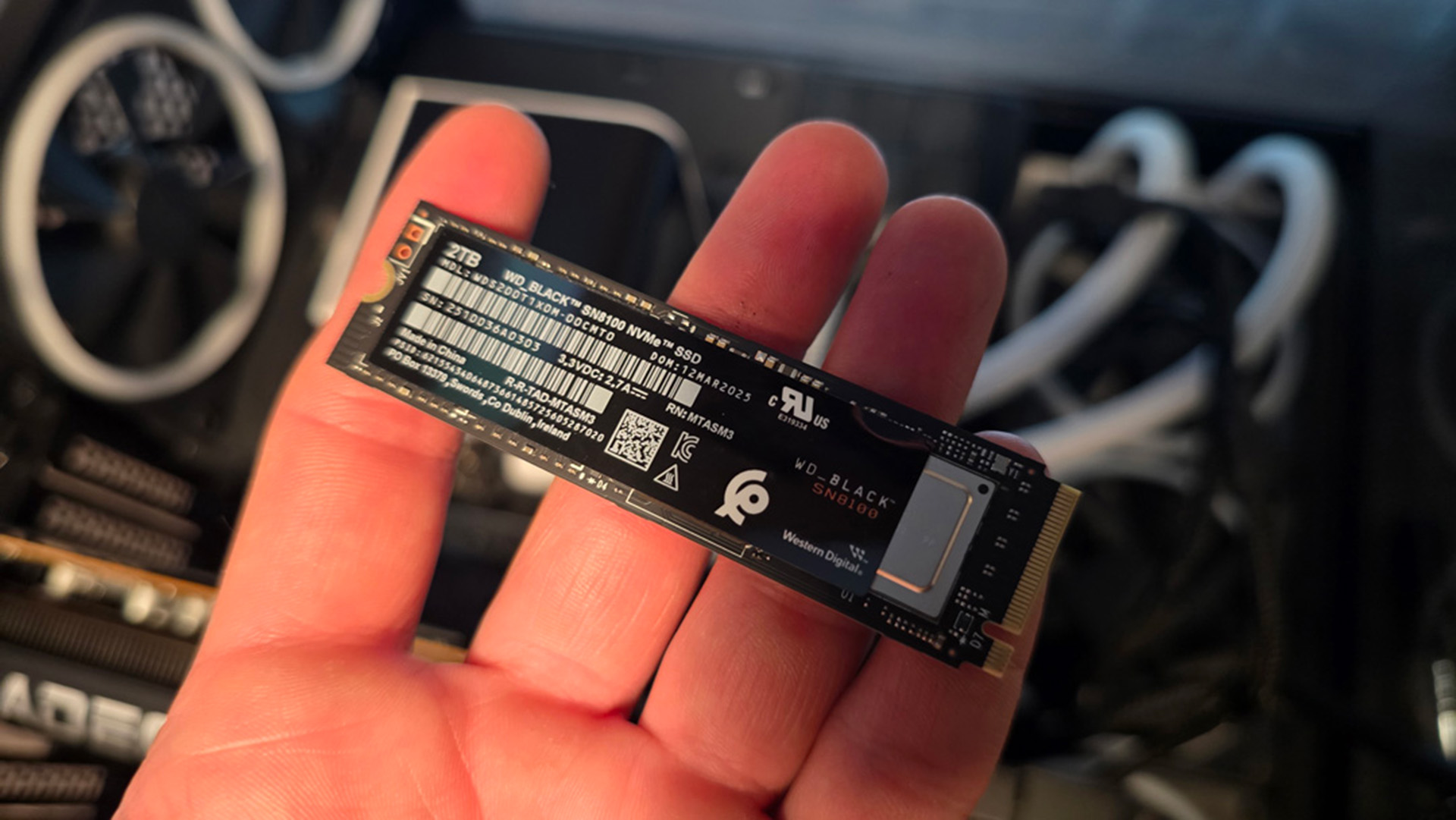
The best budget PCIe 5 SSD
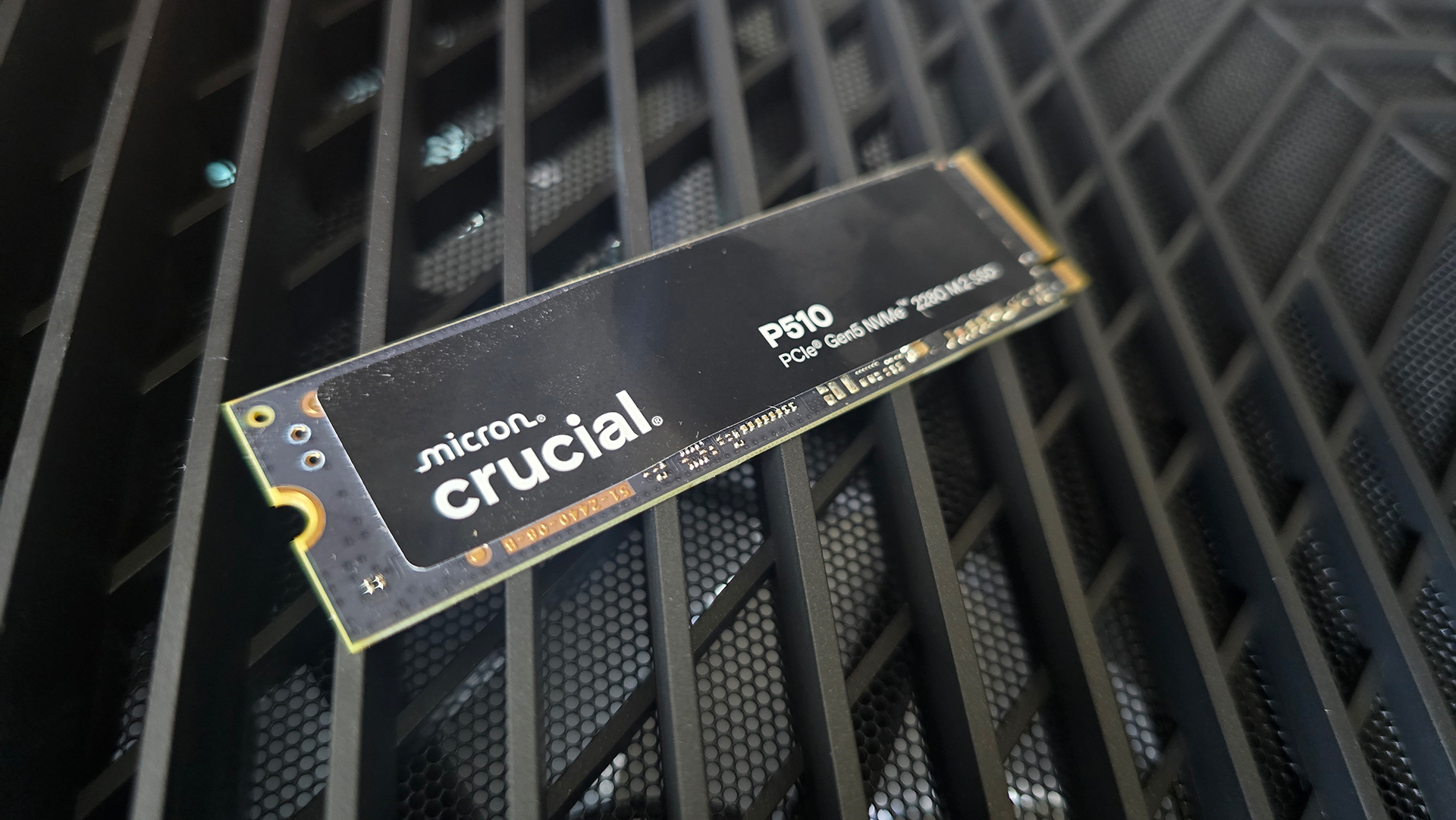
The best budget PCIe 5.0 SSD
Specifications
Capacity: 1 TB, 2 TB
Controller: Phison E31T
Flash: Micron 276-Layer TLC NAND
DRAM: None
Interface: M.2 PCIe 5.0 x4
Seq. read: 11000 MB/s
Seq. write: 9000 MB/s
Reasons to buy
+
Best E31T sequential speeds
+
Good pricing
+
Perfectly balanced
Reasons to avoid
–
Sluggish load times
–
Average random 4K performance
Buy if…
✅ You want a perfectly balanced budget SSD: With solid all-around numbers, good temperatures, and an outstanding price, the P510 is the perfect pick for those wanting the best of everything without breaking the bank.
Don’t buy if…
❌ You’re looking for the ultimate flagship: Price to performance may be great, but it’s very much a jack of all trades. You can get far better performance than this, but at a cost.
The bottom line
💾 If you’re after an affordable PCIe 5.0 SSD, that still hoses any Gen 4 drive, then the Crucial P510 is just the ticket. It may not be the fastest PCIe 5.0 SSD around, but it absolutely dominates when it comes to the golden price/performance ratio.
PCIe 5.0 SSDs are currently more expensive than PCIe 4.0 drives, but that doesn’t mean you need to spend a small fortune just to get better-than-Gen 4 performance. Case in point: the Crucial P510 and it’s not hard to see why we recommend it as the best budget PCIe 5.0 SSD.
Not that you’d think it was a budget drive when you look at its specifications. Handling all of the data flows and instructions is a Phison E31T controller, a relatively new model that’s more power efficient and cooler-running than previous chips. That’s paired with Micron 276-layer TLC flash memory chips, though there’s no DRAM cache to keep costs down.
Taken altogether, you’ve got an SSD that’s very fast in burst read/writes, average (but not bad) in random read/writes, easy to keep cool, and doesn’t cost a small fortune. The P510 is a genuinely very good, all-round SSD that just so happens to be a fair bit speedier than your average drive.
The only thing one can really complain about is the fact that Crucial only makes two capacities: 1 and 2 TB. If it offered a 4 TB variant, the P510 would be an instant choice for anyone with a huge games library.
Read our full Crucial P510 1 TB review.
⬇️ Click to load the benchmark data⬇️
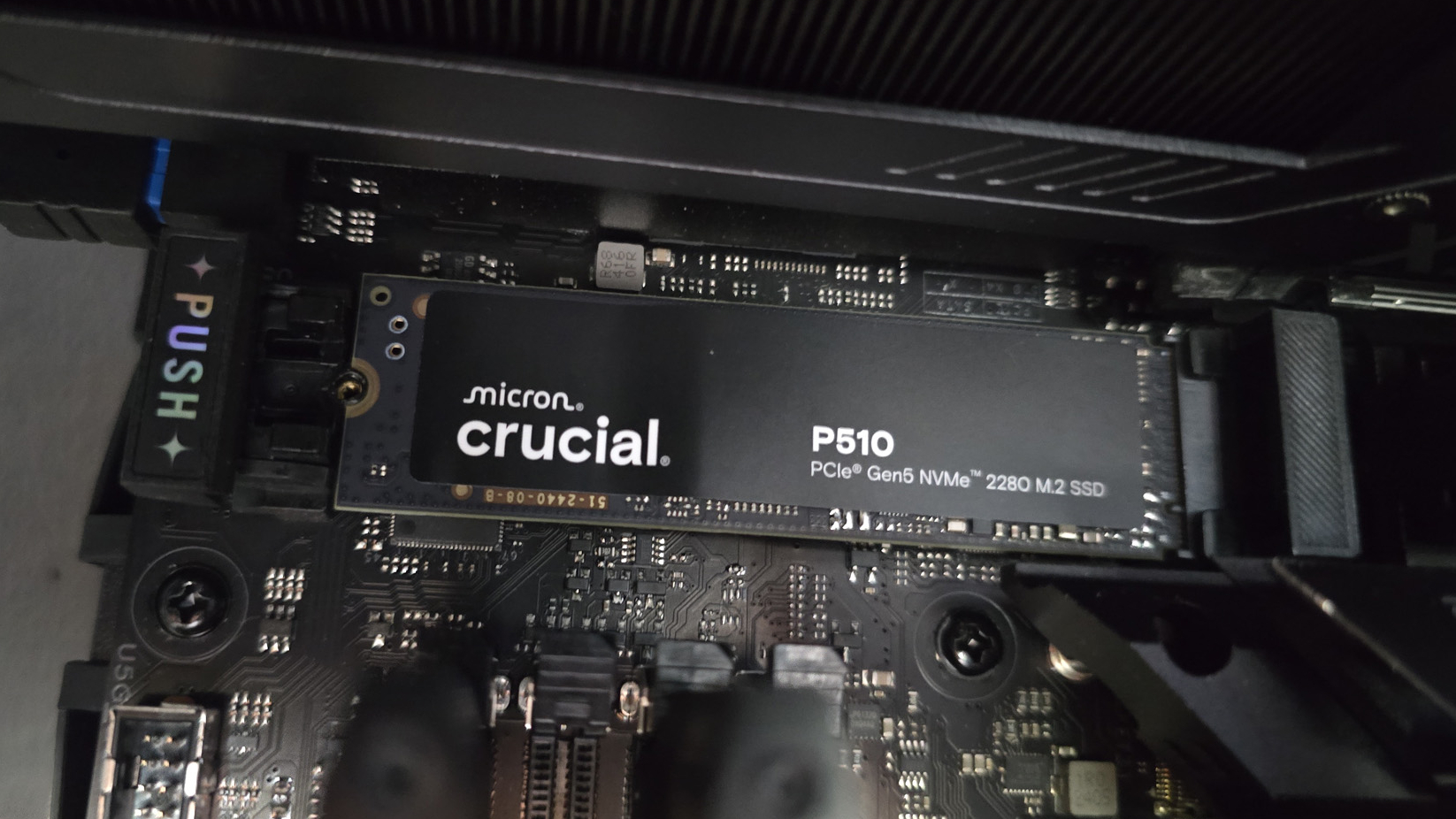
The best cooled PCIe 5 SSD
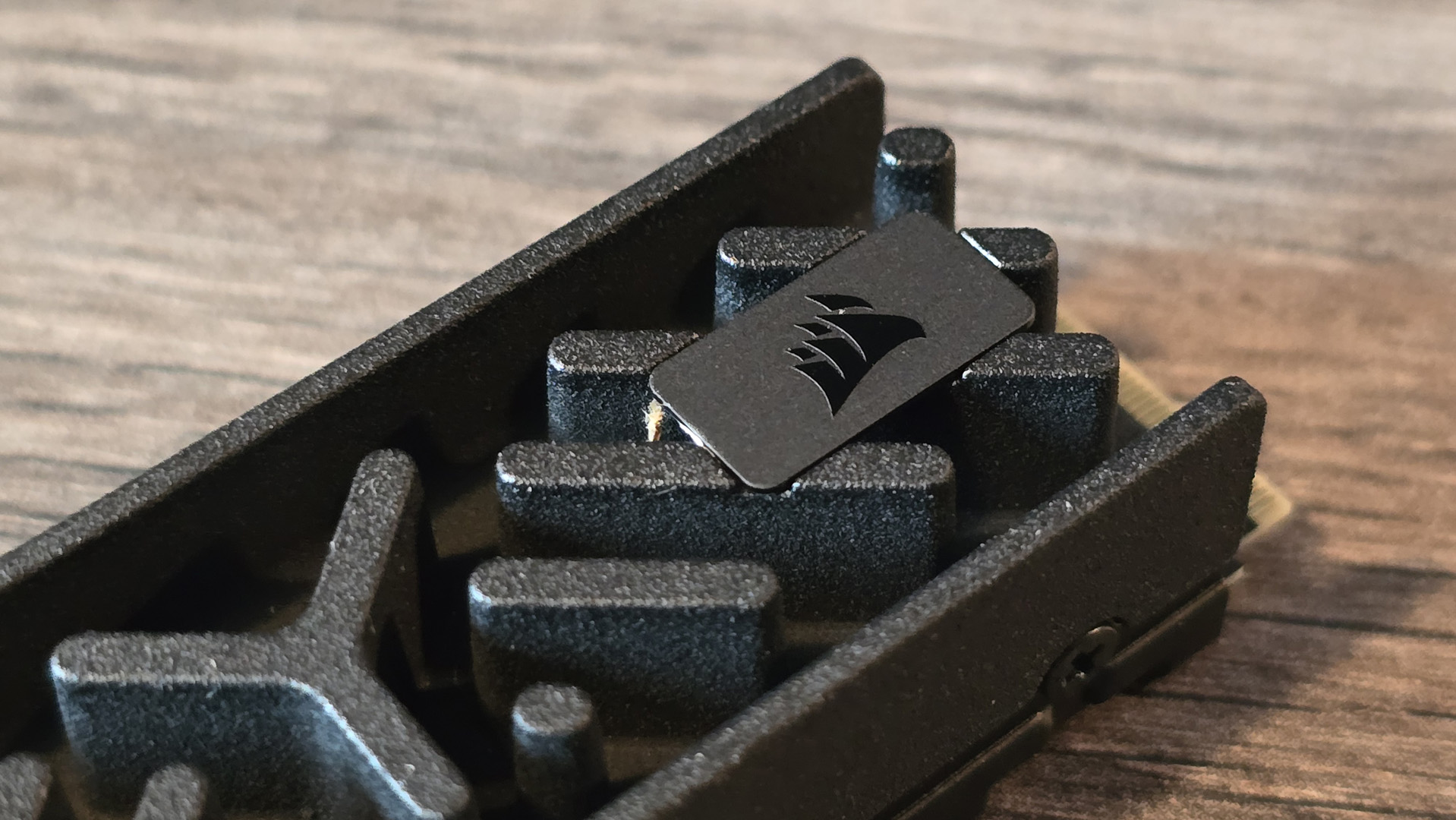
The best cooled PCIe 5.0 SSD
Specifications
Capacity: 1 TB, 2 TB
Controller: Phison E321T
Memory: Kioxia 218-Layer BiCS8 TLC NAND
DRAM: None
Interface: PCIe 5.0 x4
Seq. read: 10000 MB/s
Seq. write: 8500 MB/s
Reasons to buy
+
Phenomenally cool under load
+
Top-tier random 4K performance
+
Strong value option
Reasons to avoid
–
Slow sequentials relatively
–
Cheaper, faster drives available
–
Only 1 TB and 2 TB solutions
Buy if…
✅ Random 4K performance and cooling are everything: The MP700 Elite delivers impressively potent random 4K performance, along with some phenomenally low temperatures due to improved power efficiency.
Don’t buy if…
❌ You’re looking for the fastest sequential drive around: With 8 GB/s on writes and 10 GB/s on reads, it lacks the sequential grunt of other older and cheaper PCIe 5.0 drives.
The bottom line
💾 If temperatures are your major concern, and with PCIe 5.0 SSDs it certainly has been, then the Corsair MP700 Elite should be your go-to drive. The attached heatsink and modest performance gives it the coolest operation levels, while still beating out any last-gen SSD you could name in terms of straightline pace.
While the very latest crop of PCIe 5.0 SSDs do run a lot cooler than the first generation of models, they’re still hotter than an average PCIe 4.0 drive, and there are plenty of motherboards with support for Gen 5 M.2 SSDs that can’t cope with the extra heat. For those cases, you want a Corsair MP700 Elite, the best cooled PCIe 5.0 SSD we’ve tested so far.
It’s so good, in fact, that you’ll wish every chip in your gaming PC were as well-cooled as the MP700 Elite. Corsair has fitted a dense and hefty heatsink to its SSD, but our Zack removed it and used the one in his test bench motherboard to have comparable results across every different SSD. The result? A figure of 55 °C in our temperature test—eight degrees cooler than a WD Black SN850X and a remarkable 32 degrees cooler than a Crucial T700.
The outstanding thermal performance is down to Corsair’s design and the use of the energy-efficient Phison E31T controller and Kioxia 218-Layer TLC flash memory chips.
All that would be for nought if it weren’t very fast, but the MP700 Elite is pretty decent in that respect. Its sequential burst and random 4K speeds are similar to those of the Crucial P510 above, so while it’s not a rocketship like the WD Black SN8100, it’s plenty fast enough for gaming.
Something else it shares with the P510 is the lack of a 4 TB option. Motherboards that do have Gen 5 M.2 slots typically only have the one, though some of the latest models sport two. That makes buying two 2 TB PCIe 5.0 drives a tricky proposition, so hopefully, Corsair will address this in the near future.
Read our full Corsair MP700 Elite 2 TB review.
⬇️ Click to load the benchmark data⬇️
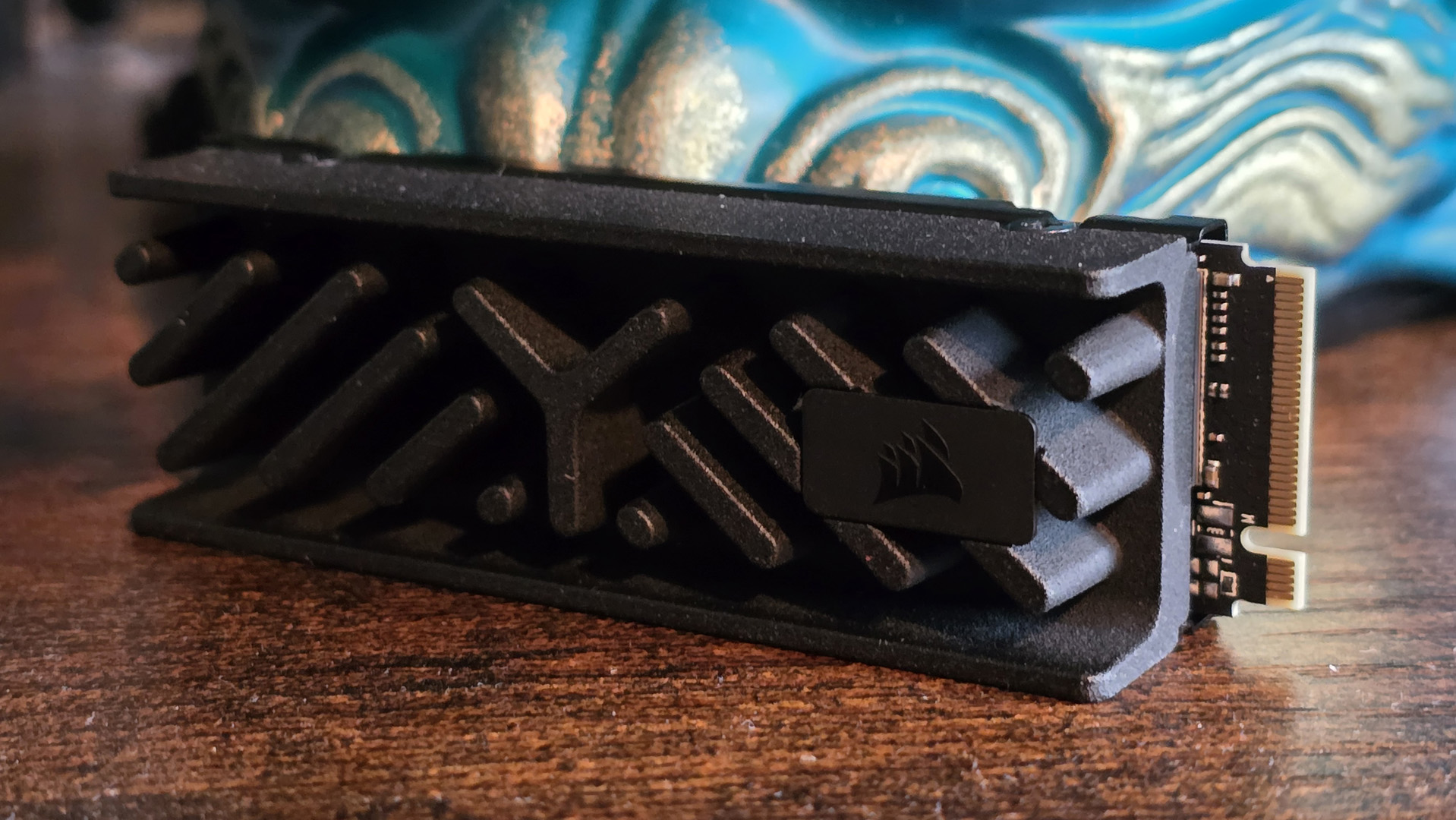
Also tested
How we test SSDs
We put every SSD we get in the PC Gamer labs through their paces in various benchmarks made up of a mix of synthetic tests and real-world applications. To ascertain a drive’s sequential throughput, we use ATTO SSD Benchmark for compressible data (a best-case scenario) and AS SSD for incompressible data (more realistic). We also test random throughput with AS SSD and a combination of CrystalDiskMark 7.0 and Anvil Pro.
When it comes to the real-world tests, we time how long it takes to copy a 30 GB game install across the drive and use PCMark10 and Final Fantasy XIV: Shadowbringers, which includes a level load test.
We also check operating temperatures to ensure that the drive isn’t getting too hot and throttling. That’s becoming more of an issue with faster and faster drives. The first generation of PCIe 5.0 drives require a lot more cooling than PCIe 4.0 SSDs, but previous generations, but the latest models recommended in this guide have solved that problem entirely.
Where to buy the best SSDs

Where are the best gaming SSD deals?
In the US:
Amazon – Up to 50% off internal and external SSDs
Walmart – Deals on internal and external SSDs
B&H Photo – Save up to $50 on NVMe SSDs
Best Buy – Great prices on Samsung SSDs
Staples – Save up to 30% on a range of SSDs, USB sticks, and external SSDs
Newegg – Plenty of NVMe SSDs
In the UK:
Amazon UK – Save on HDDs, SDDs, and external drives
Scan – SATA drives as low as £21
Ebuyer – 500GB SSDs starting from £34.98
Overclockers – Save up to £51 on Samsung SSDs
Currys – Save £32.00 on WD Black SN750
Laptops Direct – Save on SSDs for your laptop
SSD FAQ
What’s the difference between SATA and NVMe PCIe-based SSDs?
As the prices of NVMe SSDs fall every day, we don’t see much difference in cost between the best NVMe SSDs and their SATA-based equivalents. When the cheapest 2.5-inch 1 TB SATA SSD is only $24 less than an equivalent capacity NVMe PCIe drive (and four times slower), why bother with older SATA technology when you can move into the future for so cheap?
Where SATA’s theoretical performance limit is 600 MB/s, and PCIe 3.0’s is 4,000 MB/s, PCIe 4.0 SSDs can double that figure to a maximum of 8,000 MB/s. The current top speed of available Gen 4 drives is around 7,000 MB/s, which is double that of the previous generation.
PCIe 5.0 SSDs can exceed 10,000 MB/s and onwards up to their theoretical limit of around 16,000 MB/s. They used to be hot and too expensive for what they offered, but the new generation of PCIe 5.0 drives so much better, they’re much easier to recommend now.
Can I fit an NVMe SSD on my motherboard?
The M.2 socket has been included on motherboards of all kinds for many years now, so the chances are that there’s a spare slot sitting inside your existing gaming PC. Check out your motherboard’s specs page online before pulling the trigger on an NVMe SSD purchase, though, to be sure.
Those harboring a board that’s a few years old now, do yourself a favor and make sure it supports booting from an NVMe drive first. Not all older motherboards do, especially if you’re going back multiple CPU generations (maybe a full upgrade is due, if so).
If you don’t have any NVMe slots, you can buy expansion add-in cards that will offer one or more NVMe slots in exchange for one of your PCIe slots on your motherboard, just be aware that these are at an added cost and take up precious room.
Can you put a PCIe 5.0 SSD in a 4.0 slot?
Yes, you can. The M.2 socket is identical between the two generations of interface, and so a PCIe 5.0 SSD will fit comfortably inside a PCIe 4.0 slot. They will also function perfectly well, except the Gen5 drive will be limited by the speed of the older interface.
The same goes for dropping a PCIe 5.0 into a PCIe 3.0 socket. You’re just wasting the potential of the higher-speed drive by dropping it into a slower slot, is all, but it will work.
What PCIe generation should I look for?
Right now, PCIe 4.0 is the go-to PCIe generation. That’s because it offers high speed at a reasonable cost. However, the newest PCIe 5.0 gaming SSDs on the market offer up to double the sequential read/write performance, as well as outstanding random 4K, all without getting blisteringly hot. Gen 5 drives are still more expensive than Gen 4 ones, though.
Here are the rough speeds (multiply by 1,000 to get MB/s) for each PCIe generation over x4 lanes:
PCIe 1.0 / Gen1: 1 GB/s
PCIe 2.0 / Gen2: 2 GB/s
PCIe 3.0 / Gen3: 4 GB/s
PCIe 4.0 / Gen4: 8 GB/s
PCIe 5.0 / Gen5: 16 GB/s
How big a gaming SSD should I buy?
The easy answer is: as big as you can afford. With SSDs, the higher capacity, often the quicker they are. That’s because you end up with more memory dies plumbed into a multi-channel memory controller, and that extra parallelism leads to higher performance.
We would traditionally say that an entry-level SSD should be 1 TB in order to pack in your operating system, for slick general system speed, and your most regularly played games. But such is the increasing size of modern games that a 2 TB SSD is increasingly looking like the minimum recommendation, and a 4 TB drive or above will really give you some proper breathing room for lots of big game installs.
